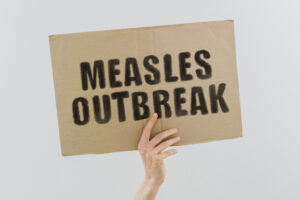Over the years the produce industry has had some major outbreaks. But does this really mean that produce is less safe than any other food or that that industry isn’t “working hard enough”? I don’t think so. Here’s my thinking, as well as overviews of the critical outbreaks and some thoughts on lessons to be learned. The multi-state outbreak of E. coli O157:H7 infections linked to romaine lettuce, which was first detected in early April, has reached a case count of 172 infections in 32 states, resulting in 75 hospitalizations and one death … and no recalls. Because no single source has yet been found, CDC’s advice to consumers and retailers is to not eat, sell, or serve any romaine lettuce unless it can be confirmed that it is not from the Yuma, Ariz., growing region. For those who don’t know much about leafy greens production or the Yuma, Ariz., region, that may seem to be a fairly innocuous bit of advice. But, as many in the industry know – Yuma County in Arizona is the “winter lettuce capital of the world,” supplying 90% of the nation’s leafy vegetables between November and March; up to 50,000 acres of romaine lettuce are cultivated each year. Add to that the fact that consumer reaction to major outbreaks is often to avoid the product altogether, so that 90% quickly can become nearly 100% – of all leafy greens. It is, in fact, much like the spinach E. coli outbreak of 2006, for which the source was finally traced back to a single California field after months of investigation, but investigators were unable to definitely determine how the contamination originated. The outbreak sickened more than 300 and killed three. Similar, as well, was the Salmonella salsa outbreak initially implicating tomatoes, but eventually linked to peppers from Mexico. Because it took so long to trace the contamination and determine peppers as the actual culprit, the tomato industry was ravaged as consumers began avoiding tomatoes altogether based on advice from States and FDA. All three situations caused warnings against consumption of the implicated produce type and consumer avoidance of all leafy greens/tomatoes, resulting in significant impact to the industry. What have we and can we learn from these? In both of the previous situations, the industry responded with major improvements: The Leafy Greens Agreement (LGMA): In 2007, in response to the outbreak, California farmers made an unprecedented commitment to protecting public health through the creation of the LGMA. With a goal to assure safe leafy greens and confidence in our food safety programs, the program involves a set of food safety practices for leafy greens. Participation is voluntary, but once committed, a company is subject to mandatory USDA audits. The Produce Traceability Initiative. The Produce Traceability Initiative (PTI) is an industry-led effort to drive whole-chain traceability through common data standards. The initiative includes seven milestones for implementing case-level electronic traceability in the produce industry. So, despite the severity of the outbreaks – and don’t get me wrong, they were severe – but when you consider how much fresh produce is consumed every day, much without any type of kill step, one has to applaud the produce industry in keeping the vast majority of produce really safe – and the industry works very hard to make it safe. But produce is a natural product, subject to natural contamination, e.g., we’re never going to stop birds from flying over and dropping their waste. Additionally, as was stated in FDA’s report on the spinach E. coli outbreak, “Because of the many ways that E. coli O157:H7 can be transferred — including animals, humans, and water — the precise means by which the bacteria spread to the spinach remains unknown.” There are some things we may never be able to precisely know, but when these things happen, we need to be able to alleviate consumer fears much more quickly and completely. We need to more quickly and effectively trace back to a field, lot, etc. We need to limit the length of outbreaks and the number of illnesses – and deaths. Thus, where I think improvement is still needed, and what I hope this latest outbreak helps us improve, is the traceback of produce – of all foods really. Our tracking systems still don’t work. They take much too long and are too imprecise. Although we’ve had one forward/one back traceability requirements since the passage of the Bioterrorism Act of 2002, there is not a lot of detail required. There also are requirements in FSMA for one up/one back and for the identification of high-risk foods for which further requirements are to be made. But, again, we need more detail from FDA on the traceback – and we need those high-risk food lists and the enhanced requirements for traceability. In 2009, FDA funded IFT to undertake a vast survey of the food industry to determine optimal approaches for traceability. That report was very thorough and very solid – but here we are almost a decade later and nothing has happened! We’re also gaining new technologies, such as blockchain, that could be helpful, but being essentially a data set, it simply has the building blocks for a traceability system – and any system is only as good as the data that is put into it. So where are we today? What can such outbreaks teach us? My take is that we all need to take lessons from all outbreaks regardless of the implicated source and work together to continue to improve traceability, to limit the impact of any contamination at any point in the chain, to protect consumers and protect the industry as a whole. So, what are those lessons? First, back in the days of the tomato-linked Salmonella outbreak that turned out to be peppers, FDA eventually engaged very closely with the industry to figure it out. This is a process of industry engagement that needs be used every time we have a large outbreak like the current romaine situation, and my understanding is that FDA did not do that! The second lesson is to revisit traceability systems, and I urge FDA to revisit the FSMA requirements from the 2011 statute and to publish specific regulations around product tracking. Further, this is a call to action to the food industry and technology providers to figure out a workable product tracking system that is implementable and cost effective. About The Acheson Group (TAG) Led by Former FDA Associate Commissioner for Foods Dr. David Acheson, TAG is a food safety consulting group that provides guidance and expertise worldwide for companies throughout the food supply chain. With in-depth industry knowledge combined with real-world experience, TAG’s team of food safety experts help companies more effectively mitigate risk, improve operational efficiencies, and ensure regulatory and standards compliance. www.AchesonGroup.com





